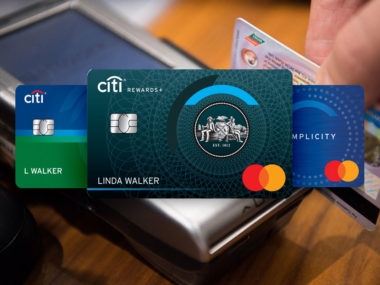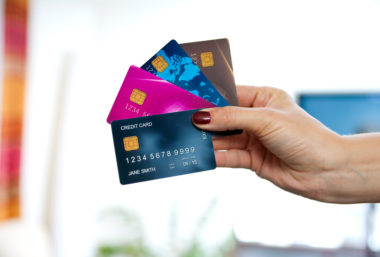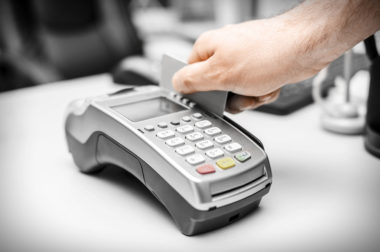When you log into your online banking account, you will notice a dollar amount next to the words “Available Credit” pertaining to your credit card. What does available credit mean, though?
Available credit refers to how much credit you have left to borrow from the card issuer. For instance, your card might have a credit limit of $10,000 per month, which means you cannot exceed $10,000 in spending with that particular account. If you have made $3,435 in purchases, for example, then your available credit is $6,565 until you reduce it by spending more or increase it by paying off part of your credit card debt.
Your credit card’s available credit is a significant component of your credit score. Even if you have $10,000 available to you, lenders may view you as a high-risk borrower if your spending exceeds a certain ratio. Your available credit is an important metric to pay attention to.
Table of Contents
Available Credit vs. Credit Limit
That said, let’s clarify the difference between available credit and credit limit. Your credit limit is how much money you can borrow from the card issuer in any given month. Essentially, your credit limit is how much money a lender trusts you with.
Lenders and other credit card issuers factor in a variety of information when determining what your credit limit will be, such as your income, credit history, the type of card, your debt-to-income ratio, and more. Credit limits can differ between individuals, so you may not know what your limit will be when applying for a card until the lender approves you. Some particular cards, however, might come with a predetermined credit limit. Pay attention to credit limits when applying for the best credit cards or considering offers.
Your available credit, then, is how much of your credit limit you have left to use to make purchases. Similar to the previous example, if you have a credit limit of $5,000 on a brand new card and the first purchase you make is a television for $500, then your available credit is now $4,500 until you pay some or all of the $500 balance back.
Available credit is unique to revolving credit. In the case of non-revolving credit, such as loans, you borrow a one-time amount and pay it back with interest. With revolving credit, your outstanding balance will rise and fall depending on your spending and repayment habits.
What Affects Your Available Credit?
While multiple factors can influence your credit limit, two things primarily affect your available credit: your spending and repayment. The amount of credit you use to make purchases in comparison with your credit limit is known as your “credit utilization ratio.” This figures into the “Amounts Owed” component of your credit score (specifically, FICO). Typically, maintaining a lower credit utilization ratio reflects better on your score.
How to Increase Your Available Credit
The simplest way to increase your available credit is to pay back all or part of your outstanding balance. Another option is applying for a new credit card: once the account is open, this line of credit will add to your combined existing credit limit. If you have three cards with limits of $2,000, $4,000, and $5,000, then opening a new credit card with a limit of $6,000 will increase your total credit limit to $17,000. This new total of available credit will reduce your debt-to-credit ratio.
You can, however, ask your card issuer directly to increase your credit limit. Most issuers will prefer that your account be at least a year old, and they will ask to review your credit history. They may request more information from you, but simply requesting a higher limit can increase your available credit without opening another account.
How to Check Your Available Credit
You have a few ways to check your available credit:
- Log into your card’s website to view your available credit;
- Call a customer service representative;
- Check your billing statement.
Subtract your outstanding balance from your credit limit if your available credit amount is not clearly displayed. Keep in mind that the latter option may not be current if you have made additional purchases since the card issuer mailed your statement to you.
Can You Overspend?
Typically, your credit card issuer will decline transactions that will put you over your credit limit. In this instance, you have “maxed out” your credit card, so you normally cannot overspend.
However, there are a few circumstances when you can exceed your credit limit:
- You are nearing your credit limit, and multiple pending transactions hit your account simultaneously;
- Transactions post for higher amounts than your lender originally authorized;
- If you decide to opt-in for over-limit coverage.
Over-limit coverage entails paying a fee if you exceed your credit limit. Your card issuer will most likely not allow you to have negative available credit unless you consent to these fees.
It is best to avoid overspending your available credit. If you do, your lender may decide to decrease your credit limit, increase your interest rate, or outright close your account if you overspend habitually. Doing so will also negatively affect your credit score. Separate card issuers may even change the terms of your agreements with them if they see you are over your limit when conducting account maintenance.
How Does Available Credit Affect You?
While you may think that spending $4,000 of your $5,000 credit limit and paying it off in its entirety every month (and not accruing any interest or late fees) will reflect well on your credit score, this is not true. Card issuers and the major credit bureaus will see this as you requiring more of your available credit, and you are, therefore, a higher risk.
In this instance, you are using 80% of your credit limit. Experian notes that, according to experts, you should aim for using 20% to 30%. So, because you have a credit limit of $5,000, then you should only be using a maximum of $1,500 every month, paying it off, and maintaining $3,500 in available credit.
The fact that you owe money on a credit account does not mean that you will have a low credit score. Instead, it’s about how much of your available credit you are taking advantage of — anything over 30% suggests that you are overextended and more likely to miss a payment. Amounts Owed accounts for 30% of your FICO score, so your credit utilization ratio has a tangible impact on how lenders assess your creditworthiness.
Credit cards can be complicated to learn, so don’t assume that just because you have a $10,000 credit limit means you have $10,000 to spend and still have a good credit score. You don’t have as much to spend as you think you do — monitor your available credit closely and always pay at least the minimum payment every month. Having a small balance on your credit card, though, will reflect better on your score than not using any credit at all.
Image Source: https://depositphotos.com/





